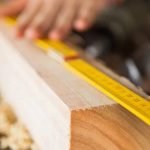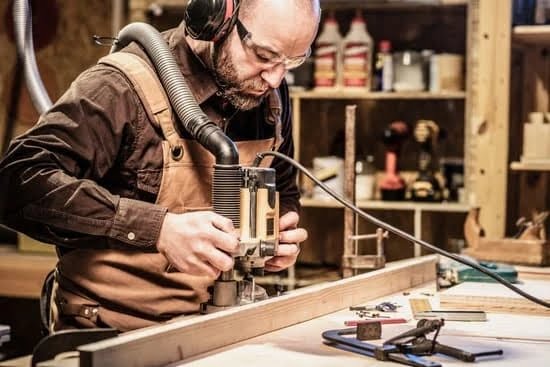What wood is best for top on woodworking workbench? Choosing the right wood for a woodworking workbench top is crucial for achieving the desired level of durability, stability, and functionality. The type of wood used can significantly impact the overall performance and longevity of the workbench.
In this article, we will explore the various options available for workbench tops, including hardwood, softwood, exotic wood, and reclaimed wood. By understanding the specific qualities and attributes of each type of wood, woodworkers can make an informed decision that aligns with their needs and preferences.
When it comes to selecting the best wood for a workbench top, there are several important factors to consider. From durability and resistance to wear and tear to stability and suitability for different types of woodworking tasks, the choice of wood can greatly influence the overall effectiveness of a workbench.
This article aims to provide valuable insights into the characteristics of ideal wood for workbench tops, as well as explore the advantages and disadvantages of different wood options available in the market.
Whether you are a seasoned professional or a hobbyist woodworker, understanding the significance of choosing the right wood for your workbench top is essential. With an in-depth exploration of hardwood, softwood, exotic wood, and reclaimed wood options available, this article will serve as a comprehensive guide to help you make an informed decision based on your specific requirements.
Characteristics of Ideal Wood for Workbench Tops
When it comes to choosing the right wood for a woodworking workbench top, it is important to consider the specific qualities and attributes that make certain types of wood ideal for this purpose. The ideal wood for workbench tops should be durable, dense, and able to withstand heavy use and impact from tools. Additionally, it should have minimal warping, twisting, or shrinking tendencies to ensure stability over time.
One of the key characteristics to look for in wood for workbench tops is hardness. Hardwood options such as maple, oak, and cherry are popular choices due to their ability to resist dents and scratches. Their dense nature makes them suitable for withstanding the wear and tear that comes with woodworking projects. Furthermore, hardwoods offer excellent shock absorption, making them an ideal choice for reducing the impact from heavy tools or pounding.
In addition to hardness, another important characteristic of ideal wood for workbench tops is its resistance to moisture and chemical damage. This is especially crucial in a workshop environment where spills and exposure to various substances may occur.
Woods like teak and cedar are known for their natural resistance to moisture, making them suitable options for workbench tops that may be exposed to such elements. Ultimately, understanding the specific qualities and attributes of different types of wood will help woodworking enthusiasts make an informed decision on what wood is best for their workbench top based on their individual needs and preferences.
Hardwood Options for Workbench Tops
When considering the best wood for a woodworking workbench top, hardwood options are often at the top of the list. Hardwood is known for its durability, strength, and resistance to wear and tear, making it a popular choice for workbench tops. Several types of hardwood are commonly used for workbench tops due to their specific qualities and benefits.
One excellent option for a workbench top is maple wood. Maple is extremely hard, making it resistant to dents and scratches, which makes it an ideal surface for heavy-duty woodworking tasks. It also has a smooth grain that allows materials to glide easily across its surface, making it perfect for projects that require precision and accuracy.
Another popular hardwood choice for workbench tops is oak. Oak is known for its strength and durability, which makes it a reliable option for workbench surfaces. It also has a beautiful grain pattern that adds aesthetic appeal to the workbench. Despite being harder to cut and shape than other woods, oak is highly resilient and able to withstand the demands of woodworking tasks.
In addition to maple and oak, cherry wood is another hardwood option worth considering for a workbench top. Cherry wood offers both beauty and durability, with its rich color and smooth texture. It may not be as hard as maple or oak, but it still provides an excellent surface for woodworking projects while adding warmth and elegance to the workspace.
| Hardwood Option | Benefits |
|---|---|
| Maple | Extremely hard, resistant to dents and scratches |
| Oak | Known for strength and durability; beautiful grain pattern |
| Cherry | Offers beauty, warmth, and elegance; durable enough for woodworking tasks |
Softwood Options for Workbench Tops
Softwood is a popular option for workbench tops due to its affordability and availability. However, it’s important to consider the pros and cons of using softwood for this purpose. One of the main advantages of using softwood for a workbench top is its lighter weight compared to hardwood, making it easier to move and transport if necessary.
Softwood also tends to be more affordable, making it an attractive option for woodworkers on a budget. Additionally, some softwoods like pine and cedar have natural resistance to decay and insect infestations, which can be beneficial for workbenches that may be exposed to moisture or outdoor elements.
On the other hand, softwood is generally less durable and more prone to dents and scratches compared to hardwood. This means that a workbench with a softwood top may require more frequent maintenance and refinishing to keep it in good condition.
Additionally, softwood may not be as stable as hardwood, meaning it may be more susceptible to warping or bowing over time, especially if not properly sealed or finished. It’s important for woodworkers to carefully consider their specific needs and usage requirements before opting for softwood as the material for their workbench top.
When considering softwood options for workbench tops, there are several types of wood to consider. Pine is a common choice due to its affordability and availability, but it may not offer the same level of durability as other options like cedar or redwood. Cedar is known for its natural resistance to decay and insect damage, making it a suitable choice for outdoor workbenches or those used in damp environments.
Redwood is another popular choice with similar benefits in terms of durability and resistance to decay. Ultimately, the choice between different types of softwoods will depend on factors such as budget, desired aesthetics, and specific usage requirements.
Exotic Wood Options for Workbench Tops
Exotic woods are known for their unparalleled beauty and striking visual appeal, making them a coveted choice for workbench tops. One of the most popular options is teak, which is highly regarded for its exceptional durability and resistance to moisture, making it an excellent choice for workbenches that may be exposed to humidity or water.
Another sought-after exotic wood is zebrawood, prized for its distinctive striped grain pattern and rich golden hue. Zebrawood is not only visually stunning but also impressively resilient, standing up well to heavy-duty use.
Similarly, purpleheart wood is renowned for its vibrant purple color that darkens over time to a deep eggplant shade. In addition to its captivating appearance, purpleheart wood boasts impressive strength and hardness, ensuring longevity and resilience in a workbench top. It’s important to note that while exotic woods offer exceptional aesthetics and durability, they can be more expensive than traditional hardwood options due to their rarity and unique characteristics.
When considering an exotic wood for a workbench top, it’s essential to take into account the specific woodworking needs and preferences of the individual craftsman. While some may prioritize the luxurious appearance of an exotic wood, others may place greater emphasis on high durability or sustainability. Therefore, carefully assessing both the visual appeal and practical attributes of each exotic wood option will help determine which one best suits the requirements of the woodworking project at hand.
| Exotic Wood Option | Special Characteristics |
|---|---|
| Teak | Durable and resistant to moisture |
| Zebrawood | Distinctive striped grain pattern; rich golden hue; resilient |
| Purpleheart Wood | Vibrant purple color; exceptionally strong and hard |
Reclaimed Wood for Workbench Tops
When it comes to choosing the right wood for a workbench top, reclaimed wood is an option that offers both environmental and aesthetic benefits. Reclaimed wood is sourced from old structures, such as barns, warehouses, or fences, and repurposed for use in woodworking projects. This not only gives the wood a unique and rustic appearance but also helps in reducing the demand for new timber, thereby contributing to sustainable practices in woodworking.
Environmental Benefits
One of the main advantages of using reclaimed wood for workbench tops is its positive impact on the environment. By repurposing old wood instead of cutting down new trees, the demand for virgin timber is reduced, which helps in conserving forests and natural habitats. Additionally, using reclaimed wood prevents old lumber from ending up in landfills, promoting waste reduction and a more sustainable approach to woodworking.
Aesthetic Benefits
In addition to its environmental advantages, reclaimed wood provides a distinct and attractive appearance for workbench tops. The characteristics of reclaimed wood, such as weathered texture, nail holes, and patina from years of use, add a unique charm to the workbench.
This can enhance the overall look of the workshop while also telling a story through the history embedded in the reclaimed wood. Whether it’s a farmhouse-style workbench or an industrial-inspired design, using reclaimed wood can bring character and authenticity to the workspace.
Beyond just being environmentally conscious and visually appealing, using reclaimed wood for workbench tops also aligns with the growing trend of upcycling and repurposing materials in furniture construction. Woodworkers looking to make an eco-friendly statement with their projects can find satisfaction in choosing reclaimed wood as a sustainable option for their workbench tops.
Factors to Consider When Choosing Wood for a Workbench Top
When choosing the right wood for a workbench top, there are several important factors to consider to ensure that it meets the specific needs and preferences of the woodworker. From durability and stability to understanding how the workbench will be used, each factor plays a crucial role in determining the best type of wood for the job.
Durability
Durability is a key consideration when selecting wood for a workbench top, especially for those who plan on using their workbench for heavy-duty projects. Hardwood options such as oak, maple, and cherry are known for their exceptional durability and ability to withstand heavy use over time. These types of wood are less prone to denting or scratching, making them an ideal choice for workbenches that will see a lot of activity.
Stability
Stability is another important factor to keep in mind when choosing wood for a workbench top. It’s essential that the wood chosen does not warp or change shape over time, as this can affect the accuracy of woodworking projects. Hardwoods like walnut and mahogany are known for their stability, making them reliable choices for a stable work surface.
Workbench Usage
The intended usage of the workbench should also be taken into account when deciding on the type of wood to use. For instance, if the workbench will primarily be used for assembling delicate pieces or working with hand tools, softer woods like pine or cedar may be suitable. However, if power tools will be used frequently or heavy objects will be placed on the workbench, hardwoods are more appropriate due to their strength and durability.
By considering these factors when choosing wood for a workbench top, woodworkers can make an informed decision that aligns with their specific needs and ensures that their work surface will perform optimally in all aspects of woodworking projects.
Conclusion
In conclusion, when it comes to choosing the best wood for a woodworking workbench top, there are several factors to consider. Hardwoods such as maple, oak, and cherry are popular choices due to their durability and stability. These woods are ideal for heavy-duty work and can withstand the wear and tear of everyday use in a woodworking shop.
Softwoods like pine and fir may be more affordable options, but they are not as resistant to dents and scratches as hardwoods. Exotic woods such as teak or mahogany are luxurious options with unique grain patterns, but they come with a higher price tag.
It is important for woodworkers to carefully consider their specific needs and preferences when selecting the best wood for their workbench top. Factors such as budget, preferred aesthetic appeal, and intended usage should all be taken into account before making a decision. Additionally, reclaimed wood is a sustainable option that not only adds character to a workbench but also reduces environmental impact.
Ultimately, there is no one-size-fits-all answer to what wood is best for a woodworking workbench top. Each wood has its own unique characteristics and benefits, so it’s important for woodworkers to assess their individual requirements before making a choice. By considering factors such as durability, stability, budget, and environmental impact, woodworkers can make an informed decision that will result in a workbench top that meets their specific needs and preferences.
Frequently Asked Questions
What Is the Best Wood to Use for a Workbench Top?
The best wood to use for a workbench top is typically hard maple, as it is durable, resistant to wear and tear, and offers a smooth surface for woodworking projects. Other suitable options include beech, birch, and oak, which also provide the necessary strength and stability for a workbench.
What Should I Make My Workbench Top Out Of?
When deciding what to make your workbench top out of, it’s essential to consider durability and sturdiness. Apart from hard maple, beech, birch, or oak are ideal choices due to their strength and resistance to damage. Additionally, considering the type of woodworking projects you’ll be undertaking can help determine the most suitable material for your workbench top.
What Is the Most Durable Finish for a Workbench Top?
The most durable finish for a workbench top is often polyurethane or tung oil. These finishes provide excellent protection against moisture, spills, and scratches while also enhancing the natural beauty of the wood. It’s important to choose a finish that can withstand heavy use and impact without compromising the integrity of the workbench top.

Hi everyone! I’m a woodworker and blogger, and this is my woodworking blog. In my blog, I share tips and tricks for woodworkers of all skill levels, as well as project ideas that you can try yourself.





